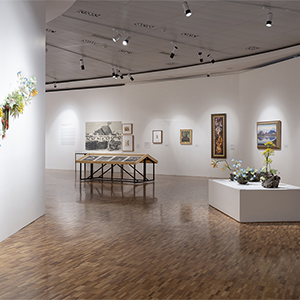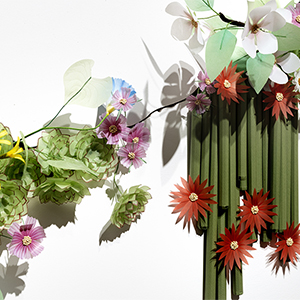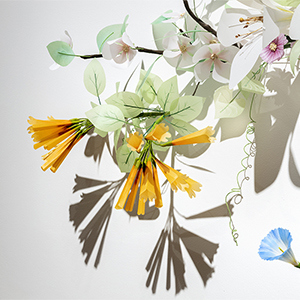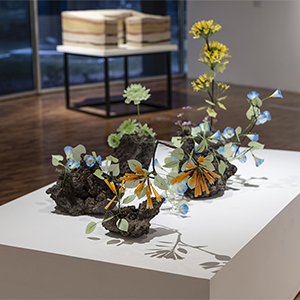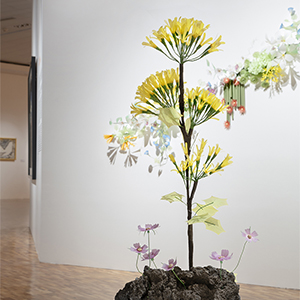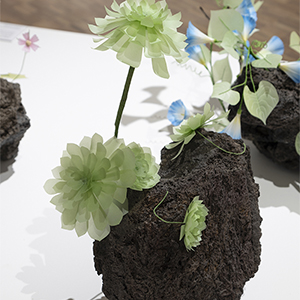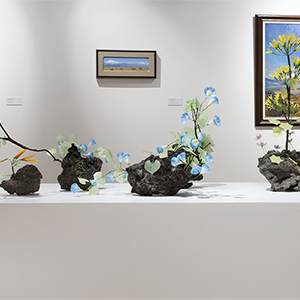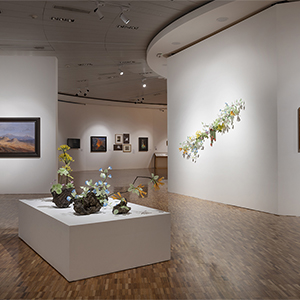
Vegetación de utilería para una utopía postapocalíptica (Prop vegetation for a post-apocalyptic utopia) is artificial herbarium comprised of flowers and plants endemic to Mexico and which are characteristic to the country: The series consists of a selection of sculptural assemblies made in the tradition of Spanish card-making—an artisan technique used to decorate vegetable paper—that unfold in schemes and chasmophytic planters which grow between walls and stones illuminated under eerie lights. This work is materially redundant: the paper used, which is in itself an organic fiber from (processed) vegetable origins is again transformed through a gesture of mimesis, into a plant or a flower, an object reminiscent of its material origins. The artificial vegetation created in this series is an exercise in naturalist imitation which recalls the history of botanical expeditions in America and it is based on the plates found on scientific illustration books such as those written by Helen O'Gorman: testimonies of the discovery but also of the exploitation of nature. On the other hand, the project itself is a reflection on the contemporary fantasies of green spaces, it seeks to point out the illusion of these false utopias, of their artificial construction. However, the project also seeks to show the need to avoid catastrophe —or to deny it—, to return to nature, to the wild, to Eden.
§
Vegetación de utilería para una utopía postapocalíptica, es un herbario artificial de flores y plantas ‘características' de México: la obra consta de una serie de ensambles escultóricos hechos a través de la tarjetería española —una técnica artesanal para decoración en papel vegetal— que se desdoblan en forma de esquemas y jardineras casmofíticas que crecen entre muros o piedras bajo luces espectrales. La obra es materialmente redundante, es decir, el papel que es a su vez una fibra orgánica-vegetal (procesada) se transforma, por medio de un gesto de mimesis, en una planta o una flor, un objeto de su memoria material originaria. La vegetación artificial creada es un ejercicio de imitación naturalista que rememora sobre la historia de las expediciones botánicas en América y toma como base las laminillas de los libros de ilustración científica como el de Helen O’Gorman, testimonios del hallazgo pero también de la explotación de la naturaleza. Por otra parte, el proyecto en si es un reflexión sobre las fantasías contemporáneas de los espacios verdes, se busca señalar la ilusión de estas falsas utopías, de su construcción artificial. Aunque también, de su amplia necesidad de evitar la catástrofe —o de negarla—, de volver a lo natural, a lo salvaje, al Edén.
